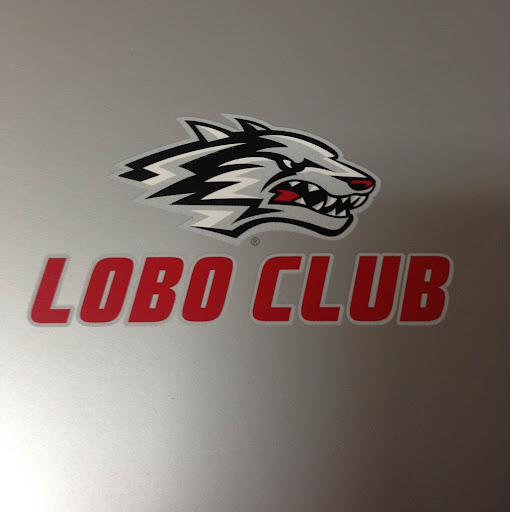Alex T Bailey
age ~47
from Columbia, MD
- Also known as:
-
- Alex Thomas Bailey
- Phone and address:
-
11365 Little Patuxent Pkwy, Columbia, MD 21044
4107409465
Alex Bailey Phones & Addresses
- 11365 Little Patuxent Pkwy, Columbia, MD 21044 • 4107409465
- Severna Park, MD
- Arbutus, MD
- 1628 Green Acres Cir, Port Saint Lucie, FL 34952 • 7723358903
- Glen Burnie, MD
- Lakewood, WA
Isbn (Books And Publications)
-
The Making Of Miss Potter: The Movie
view source -
Author:Alex Bailey
-
ISBN #:0723258635
Us Patents
-
Method Of Manufacturing Ferromagnetic Toroids Used In Ferrite Phase Shifters
view source -
US Patent:6673181, Jan 6, 2004
-
Filed:Oct 29, 2001
-
Appl. No.:09/984317
-
Inventors:Cynthia W. Berry - Pasadena MD
Deborah P. Partlow - Crownsville MD
Alex E. Bailey - Hampstead MD -
Assignee:Northrop Grumman Corporation - Los Angeles CA
-
International Classification:B32B 3126
-
US Classification:156 8912, 156182, 156252, 156253, 156256, 156257
-
Abstract:A fabrication process for ferrite toroids which utilizes ferrite ceramic tape having an improved elongation characteristic. The process utilizes a set of rigid mandrels which are employed in the final lamination to support the rectangular cross section of the internal cavity of a respective ferrite tube, thereby reducing stress concentration and permitting the highest lamination pressure to be used in the final step. The mandrels are removed prior to panel densification. The tape and mandrels operate together to minimize cracks and pores in the toroids and provide an added advantage of maintaining high tolerances in the internal cavity dimensions as well as the cavity-to-cavity alignment.
-
Method Of Forming One Or More Base Structures On An Ltcc Cofired Module
view source -
US Patent:7127809, Oct 31, 2006
-
Filed:Mar 18, 2004
-
Appl. No.:10/802746
-
Inventors:Cynthia W. Berry - Pasadena MD, US
Alex E. Bailey - Hampstead MD, US
Robert Fisher - Westminster MD, US
Tapan K. Gupta - Ellicott City MD, US
Daniel Brosey - Finksburg MD, US
Steve M. Smalley - Columbia MD, US
William A. Thomas - Randallstown MD, US -
Assignee:Northrop Grumman Corporation - Los Angeles CA
-
International Classification:H05K 3/30
-
US Classification:29832, 29840, 29851, 156 8912, 174259, 361830
-
Abstract:An LTCC module includes a base on one or more surfaces for receiving one or more external components to be attached to the module. A base is formed of a plurality of layers of metallization in a predetermined pattern. The layers include an adhesion layer on the LTCC module surface, with one or more intermediate layers, followed by a top layer. The module is fired with each application of the layers at a reduced temperature lower than the normal cofiring temperature of the LTCC module, but of sufficient value to partially sinter the layers. After the last applied top layer, the module is fired once at an elevated temperature to fully sinter the layers.
-
Method Of Laminating Low Temperature Co-Fired Ceramic (Ltcc) Material
view source -
US Patent:7240424, Jul 10, 2007
-
Filed:Aug 23, 2004
-
Appl. No.:10/922850
-
Inventors:Cynthia W. Berry - Pasadena MD, US
Alex E. Bailey - Hampstead MD, US -
Assignee:Northrop Grumman Corporation - Los Angeles CA
-
International Classification:H05K 3/36
B32B 37/02 -
US Classification:29830, 156182, 156256, 156312
-
Abstract:A method of forming an LTCC structure having at least one open cavity on each of first and second opposing sides is disclosed that includes the steps of forming a first LTCC structure including a first side having a plurality of cavities and a second side, subjecting the first LTCC structure to a first pressure, forming a second LTCC structure including a first side having a plurality of cavities and a second side, subjecting the second LTCC structure to a second pressure, arranging the first LTCC structure and the second LTCC structure such that the first LTCC structure second side faces the second LTCC structure second side, and subjecting the placed-together first and second LTCC structures to a third pressure to join the first LTCC structure to the second LTCC structure. A product formed by the subject method is also disclosed.
-
Method Of Producing An Ltcc Substrate With Cavities Having Improved Bondability
view source -
US Patent:7244331, Jul 17, 2007
-
Filed:Oct 7, 2004
-
Appl. No.:10/959121
-
Inventors:Cynthia W. Berry - Pasadena MD, US
Alex E. Bailey - Hampstead MD, US
Tapan K. Gupta - Ellicott City MD, US -
Assignee:Northrop Grumman Corporation - Los Angeles CA
-
International Classification:B32B 37/10
B32B 38/00 -
US Classification:156289, 156 8911, 156 8912
-
Abstract:A method of producing an LTCC substrate having improved cavity bondability is disclosed that involves providing a stack of green ceramic tape sheets having a cavity, placing a template having an opening corresponding to the cavity over the stack, placing a stretchable sheet of material coated with graphite or zinc stearate over the template, isostatically laminating the stack to produce an LTCC substrate having a cavity, and removing the template and sheet of stretchable material from the stack.
-
Method For Ltcc Circuitry
view source -
US Patent:7820490, Oct 26, 2010
-
Filed:Jun 12, 2006
-
Appl. No.:11/450417
-
Inventors:Cynthia W. Berry - Pasadena MD, US
Alex E. Bailey - Hampstead MD, US -
Assignee:Northrop Grumman Corporation - Los Angeles CA
-
International Classification:H01L 29/74
-
US Classification:438125, 257E2316
-
Abstract:An LTCC (low temperature cofired ceramic) structure which has conductors to which leads are to be bonded for connection to external circuitry. The conductors include additives to promote adhesion to the ceramic layer. The presence of these additives degrade bonding performance. For better bondability of the leads, a pure conductor metal layer, devoid of the additives is placed on the conductors in areas where leads are to be bonded. This pure conductor metal layer may be cofired with the stack of ceramic layers or may be post fired after stack firing.
-
Bonding Arrangement And Method For Ltcc Circuitry
view source -
US Patent:20050189630, Sep 1, 2005
-
Filed:Feb 26, 2004
-
Appl. No.:10/786125
-
Inventors:Cynthia Berry - Pasadena MD, US
Alex Bailey - Hampstead MD, US -
International Classification:H01L023/02
-
US Classification:257678000
-
Abstract:An LTCC (low temperature cofired ceramic) structure which has conductors to which leads are to be bonded for connection to external circuitry. The conductors include additives to promote adhesion to the ceramic layer. The presence of these additives degrade bonding performance. For better bondability of the leads, a pure conductor metal layer, devoid of the additives is placed on the conductors in areas where leads are to be bonded. This pure conductor metal layer may be cofired with the stack of ceramic layers or may be post fired after stack firing.
-
Low Loss, Thick Film Metallizations For Multilayer Microwave Packaging
view source -
US Patent:57442320, Apr 28, 1998
-
Filed:Jul 11, 1996
-
Appl. No.:8/680260
-
Inventors:Alex Bailey - Hampstead MD
Andrew J. Piloto - Columbia MD
Deborah P. Partlow - Export PA -
Assignee:Northrop Grumman Corporation - Los Angeles CA
-
International Classification:B23B 516
-
US Classification:428323
-
Abstract:A thick film metallization compatible with low temperature cofired ceramics (LTCC) that displays very low microwave insertion losses commensurate with those of thin film gold. However, the disclosed metallization is applied similar to conventional metallizations by screen printing and has no limit to the number of layers achievable. The electrical performance of the metallization is attained by using a spherical metal particle shape and uniform particle size distribution in the thick film paste. The advantage of this invention is that superior microwave performance can be achieved in electronic packages without the cost and limitations imposed by thin film metallization techniques.
-
High Energy Density Lead Magnesium Niobate-Based Dielectric Ceramic And Process For The Preparation Thereof
view source -
US Patent:53372093, Aug 9, 1994
-
Filed:Sep 10, 1992
-
Appl. No.:7/943357
-
Inventors:Audrey E. Sutherland - Eldersburg MD
Keith Bridger - Washington DC
Eric M. Fiore - Bel Air MD
Julie A. Christodoulou - Baltimore MD
Alex E. Bailey - Hampstead MD
Allan S. Gelb - Baltimore MD -
Assignee:Martin Marietta Corporation - Bethesda MD
-
International Classification:H01G 412
C04B 3546 -
US Classification:3613215
-
Abstract:A dielectric ceramic composition is disclosed comprising lead magnesium niobate and strontium titanate, barium titanate or a combination thereof. Dopants such as Ta, La, Y, Eu, Nd, Sm, Gd, W, Si, Zr and Sb may also be included in the composition. The lead magnesium niobate with strontium titanate and/or barium titanate composition has been found to possess extremely favorable properties such as high dielectric constant, low dielectric loss, high breakdown strength, low field-induced strain, high electrical resistivity and exceptionally high energy storage capacity. A process is also disclosed for the production of dielectric ceramic materials which includes the use of hot isostatic pressing in an oxygen-containing atmosphere. The disclosed dielectric compositions are useful in capacitors for many applications, including medical devices such as defibrillators and pacemakers.
Wikipedia References

Alex Bailey (Footballer)

Alex Bailey (Musician)
Lawyers & Attorneys

Alex C Bailey - Lawyer
view sourceLicenses:
Dist. of Columbia - Active 1983

Alex Calvin Bailey - Lawyer
view sourceLicenses:
Virginia - Authorized to practice law 1983

Alex Bailey - Lawyer
view sourceISLN:
909312792
Admitted:
1983
University:
Hampton University, B.S., 1975
Law School:
Howard University, J.D., 1981
License Records
Alex Gregory Bailey
License #:
93105 - Expired
Category:
Nursing Support
Issued Date:
Mar 9, 2010
Effective Date:
Feb 17, 2012
Type:
Nurse Aide
Flickr
Classmates

Alex Bailey
view sourceSchools:
McKinley Elementary School Olympia WA 2002-2006
Community:
Paul Dillman, Dianne Scott, Julian Smith, Heather Windham, Lyall Smith

Alex Bailey
view sourceSchools:
Cornerstone Christian Academy Sycamore IL 2001-2005
Community:
Stephanie Houtz, Heather Littlejohn, Katie Prather, Amy Lauriat

Alex Bailey (Alex)
view sourceSchools:
Peachtree High School Dunwoody GA 1975-1979
Community:
Michelle Sims, Renee Ahtes

Alex Bailey
view sourceSchools:
Crystal Lake Middle School Pompano Beach FL 2000-2004
Community:
Vivian Arevalo, Zenaida Marrero, Donna Bowers

Alex Bailey
view sourceSchools:
Gilford High School Gilford NH 2002-2006
Community:
Brian Flanders, Ed Kruger

Alex Bailey
view sourceSchools:
Chelsea High School Chelsea AL 1989-1993
Community:
Joyce White, Cathi Coon, Wanda Holmes

Alex Bailey
view sourceSchools:
White Oak High School Jacksonville NC 2002-2006
Community:
Glen Lawson, Hatsumi Johnson, Dustin Greene, Cristina Matthews, April Johnson

Alex Bailey
view sourceSchools:
Lakewood High School Salemburg NC 1998-2002
Community:
Jessica Fann, Jessica Williams, Vaneka Owens
Googleplus

Alex Bailey
Lived:
SEATTLE
WASHINGTON DC
HONOLULU
WASHINGTON DC
HONOLULU
Education:
Tufts University, University of Virginia

Alex Bailey
Education:
Oxford Brookes University - Sound Technology and Digital Music, The Sixth Form College, Farnborough - Music, Maths, Music Technology, Design Technology
Tagline:
Love touring with SYLOSIS, playing guitar and coding.

Alex Bailey
Work:
Robert R Bailey - Buyer/Sales
Vice President Santa Fe Lobo Club
Vice President Santa Fe Lobo Club

Alex Bailey
Education:
Green high school

Alex Bailey
Work:
Weitclick - Developer

Alex Bailey
Education:
Lake eola charter school

Alex Bailey
About:
Yo! It's me. Greenie, Alex, or however you know me.
Tagline:
I'm the green firefox/cat hybrid you either know or you don't. Hi!

Alex Bailey
Plaxo

Alex Bailey
view sourceMitchellville, MDPast: Associate Counsel at U.S. Dept. of Energy Office of General Counsel (Retired) Attorney (retired); President, Centremega Corporation

Alex Bailey
view sourceLondon

Alex R. Bailey
view source
Alex Bailey
view sourceGoogle

alex bailey
view sourceBrighton & Hove City Council

Alex Bailey
view sourceExecutive Vice President at Polaris Systems Inc

Alex Bailey
view sourceat t

Alex Nicole Bailey
view source
Alex Bailey Potter
view source
Alex Silentbob Bailey
view source
Alex Bailey Hughes
view source
Alex Bailey
view source
Alex Bailey
view source
Alex MrColgate Bailey
view source
Heathan Alex Bailey
view sourceYoutube
Get Report for Alex T Bailey from Columbia, MD, age ~47















